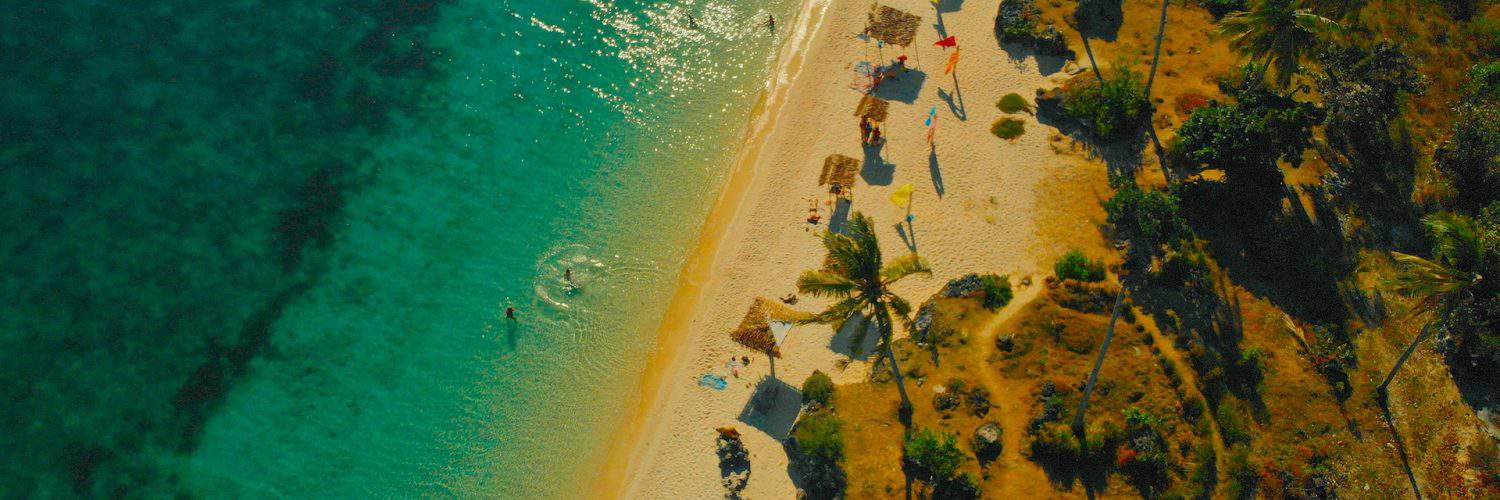Cebu, the Queen City of the South, holds an enchanting blend of rich cultural heritage, captivating landscapes, and modern urban flair. It’s not just an island – it’s a pulsating heart of the Philippines, offering a microcosm of the country’s best. From historical landmarks that reverberate tales of centuries gone by to natural wonders that leave you spellbound, Cebu is where stories come alive.
1. Magellan’s Cross Planted by Portuguese and Spanish explorers as ordered by Ferdinand Magellan upon arriving in Cebu in 1521, Magellan’s Cross holds a significant place in Philippine history. It symbolizes the birth of Christianity in the country.
The cross is housed in a chapel next to the Basilica Menor del Santo Niño on Magallanes Street, just in front of the city center. The present cross is a tindalo wood encasing the original cross which is believed to have been left by Magellan. Visitors often stand in awe, reflecting on the monumental events that this artifact represents, linking the Philippines with the greater realm of world history.
2. Basilica del Santo Niño Adjacent to Magellan’s Cross stands the Basilica del Santo Niño, which is home to the oldest religious relic in the Philippines – the image of the Santo Niño de Cebu. Gifted by Magellan to Queen Juana of Cebu in 1521, it’s a symbol of the Filipinos’ conversion to Christianity.
The church itself, with its striking façade and grandeur, is a testament to the island’s colonial past. Visitors are often mesmerized by its intricate designs, murals, and the strong sense of devotion permeating its walls. While it’s a place of worship, the basilica also welcomes tourists eager to witness the harmony of history, art, and faith.
3. Kawasan Falls Located in Badian, about 130 kilometers southwest of Cebu City, Kawasan Falls is a three-tiered cascade nestled amidst lush tropical vegetation. Its turquoise waters invite both locals and tourists for a refreshing dip.
The journey to reach the falls is an adventure in itself, requiring a short trek through the jungle. Along the way, the melodic sounds of chirping birds and flowing water set a tranquil ambiance. Once at the falls, many indulge in bamboo rafting under the gushing waters for a natural massage experience.
4. Oslob Whale Shark Watching One of Cebu’s most sought-after attractions is the opportunity to swim alongside the majestic whale sharks in Oslob. These gentle giants, locally known as “butanding”, can be spotted in the waters of Tan-awan, about 10 kilometers from the center of Oslob.
While the interaction provides a once-in-a-lifetime experience, it’s crucial for visitors to follow guidelines to ensure the safety and well-being of the whale sharks. The local government and conservationists have set measures to make the experience sustainable, ensuring that future generations can also witness the magic of these creatures.
5. Osmena Peak Rising at 1,013 meters above sea level, Osmena Peak is the highest point in Cebu. Located in the municipality of Dalaguete, this natural vantage point offers a panoramic view of jagged hills resembling a fusion of the Chocolate Hills of Bohol and the surreal landscapes of New Zealand.
The trek to the peak is beginner-friendly, taking about 15 to 30 minutes. Upon reaching the top, visitors are greeted by a breathtaking 360-degree view of Cebu, including the distant shoreline and neighboring islands. Sunrise and sunset are particularly magical times to visit, casting the landscape in ethereal hues.
6. Fort San Pedro Fort San Pedro is Cebu’s version of Manila’s Intramuros. Constructed in 1565 under the command of Miguel López de Legazpi, the triangular fort served as a military defense structure against Muslim raiders.
Today, its coral stone walls house a well-maintained garden and a museum detailing the rich history of Cebu. Walking through its grounds transports visitors back to a time when Cebu was a bustling port and a significant hub in the Spanish colonial empire.
7. Mactan Shrine Located on the island of Mactan, this shrine commemorates the Battle of Mactan between the forces of Lapu-Lapu, a native chieftain, and Ferdinand Magellan. The battle saw the defeat of Magellan and is a point of pride for the locals.
The shrine is home to a statue of Lapu-Lapu, celebrating his valor and the Filipino spirit of resistance against foreign invaders. Nearby, another monument dedicated to Magellan sheds light on the complexities of the island’s history, making the shrine a place of reflection on the intertwining narratives of heroism and discovery.
In conclusion, Cebu is not just a destination but an experience. Every corner of the island pulses with stories waiting to be discovered. From the urban beats of Cebu City to the serene rhythms of its beaches and waterfalls, Cebu is a testament to the Philippines’ unparalleled beauty and rich tapestry of history. Whether you’re a history buff, an adventure junkie, or someone looking for a peaceful retreat, Cebu beckons with open arms and promises memories to last a lifetime.


















Add comment